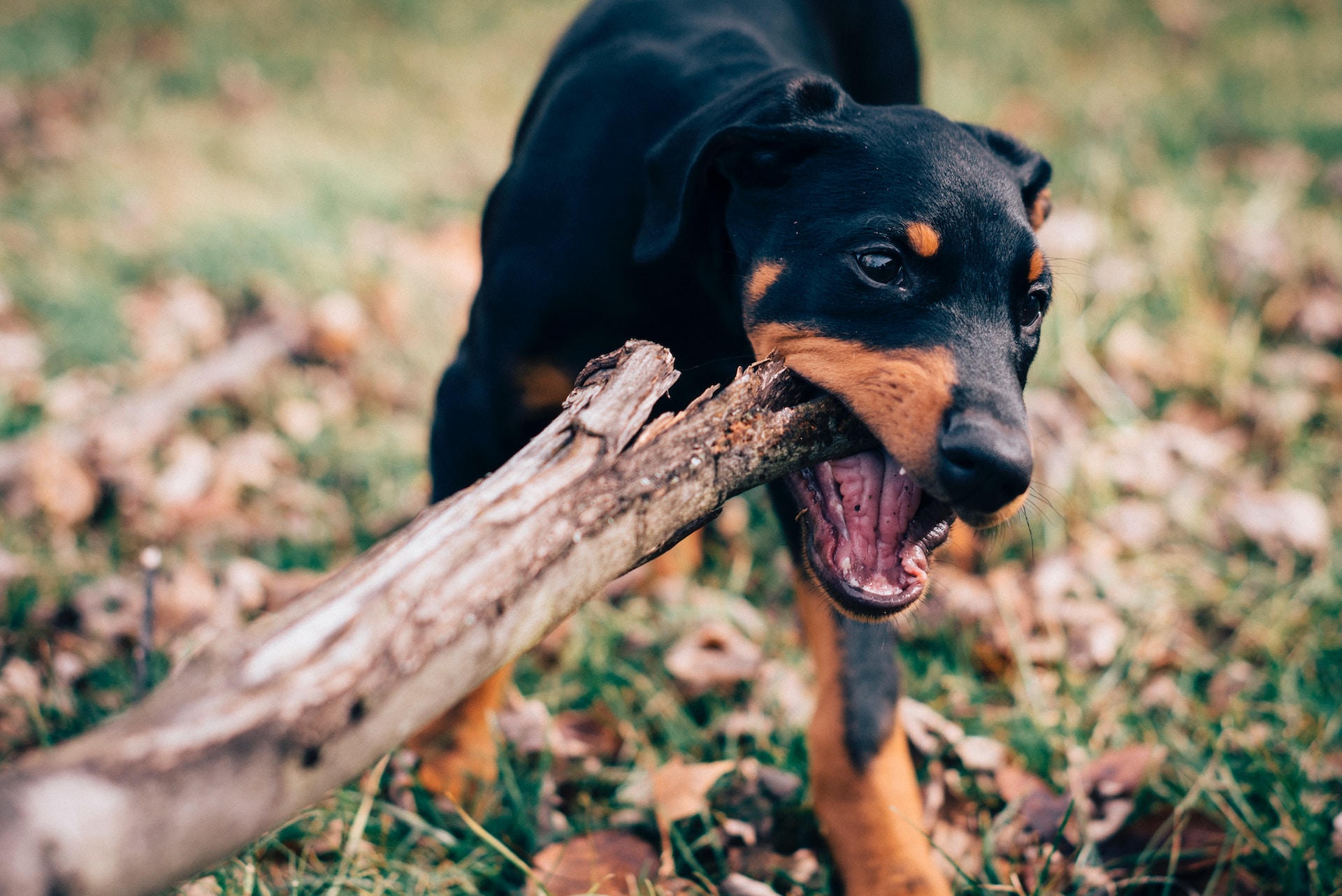
08 Sep Why You Should Never Ignore a Fractured Dog Tooth
As a responsible pet owner, keeping a close eye on your dog’s oral health is essential. This is one of the reasons veterinarians strongly recommend owners routinely brush their dog’s teeth. Not only does brushing help to remove plaque and slow the progression of periodontal disease, but taking a good look inside your pet’s mouth routinely is also a good way to catch anything that might be abnormal.
Three Major Reasons Not to Ignore Fractured Dog Teeth
One very common issue that dogs suffer from is tooth fractures. While it may seem minor, a fractured dog tooth should never be ignored. Ignoring a fractured tooth can lead to severe complications, pain, and even life-threatening conditions. Here are some reasons why you should always pay attention to a fractured dog tooth and what steps you should take if you notice one.
- Pain and Discomfort: One of the main reasons to never ignore a fractured dog tooth is the pain and discomfort it can cause for your companion. Dogs may be unable to express their pain in words, but they can show visible signs of distress. They may drool excessively, paw at their mouth, have difficulty eating, or show aggression when touching their mouth. Ignoring these signs can lead to your dog suffering needlessly.
- Infection: A fractured tooth allows bacteria to enter the pulp canal, leading to infection or possible tooth root abscessation. Infection and tooth root abscesses cause pain, swelling, and inflammation. If left untreated, the infection can spread to the surrounding tissues and even reach the bloodstream, resulting in severe health complications. If the infection is left alone for long enough, it can break down the tissues surrounding the teeth and even lead to a jaw fracture in some scenarios. Although it is tempting to simply treat a dog with antibiotics, this will only resolve the infection for a short time. If the tooth remains in the mouth and is untreated by either extraction or root canal therapy if indicated, the infection will return upon discontinuing the antibiotics.
- Behavioral Changes: Dogs in pain can exhibit changes in their behavior. They may become irritable, aggressive, or withdrawn. Ignoring a fractured tooth can lead to prolonged pain and discomfort, negatively impacting your dog’s overall temperament and well-being. Behavioral changes should never be taken lightly, as they can indicate underlying health issues.
What to Do If Your Dog Has a Fractured Tooth
Now that you understand why a fractured dog tooth should never be ignored, what should you do if you notice that your pet has a fractured tooth?
First and foremost, contacting your veterinarian as soon as possible is crucial. They will be able to examine your dog’s teeth thoroughly and determine the extent of the fracture. In some cases, your vet may recommend anesthesia and dental X-rays to assess the extent of the damage above and beneath the gum line. Based on their findings, they will develop your dog’s most appropriate treatment plan.
You will also need to examine your home and your pet’s habits to evaluate why this fracture might have happened. Dogs often fracture their teeth when they chew on hard bones (as well as antlers, marrow bones, and anything that can’t be indented with a fingernail or bent without splintering). Another common way to fracture teeth is by chewing on the metal bars of a kennel. Unless the fracture was a completely random accident, which they sometimes are, step one is to remove the issue—remove the bones, replace the crate with a different type of kennel, etc. (If you’re wondering what kind of chew objects are safe for your dog, please refer to our other blog posts for some helpful tips!)
Treatment options for a fractured dog tooth may vary depending on the severity of the fracture. If the fracture only affects the enamel and dentin and the pulp is not exposed, a bonded sealant may be sufficient to remove the plaque retentive surface of the tooth and alleviate pain. However, root canal therapy or tooth extraction may be required if the fracture is severe or extends into the pulp cavity. Both of these treatments ensure the removal of the source of pain and prevent further complications.
It is also essential to follow your veterinarian’s recommendations for post-treatment care. This may include pain management medications, a soft food diet (if extraction is performed), and regular dental check-ups. Good oral hygiene practices, such as regular teeth brushing or dental chews, can help prevent future dental issues and keep your dog’s teeth healthy.
In conclusion, ignoring a fractured dog tooth can have severe consequences for your canine companion. Fractured teeth can cause pain, discomfort, infection, and tooth loss. Additionally, they can lead to behavioral changes due to long-term discomfort. Therefore, it is essential to take immediate action if you notice a fractured tooth in your dog’s mouth. Contact your veterinarian for a thorough examination and follow their recommendations for treatment and post-care. By proactively addressing dental issues, you can help ensure your dog’s overall health and well-being. Remember, a healthy mouth leads to a happy dog!
Images used under creative commons license – commercial use (9/8/2023). Photo by Jordan Whitt on Unsplash

